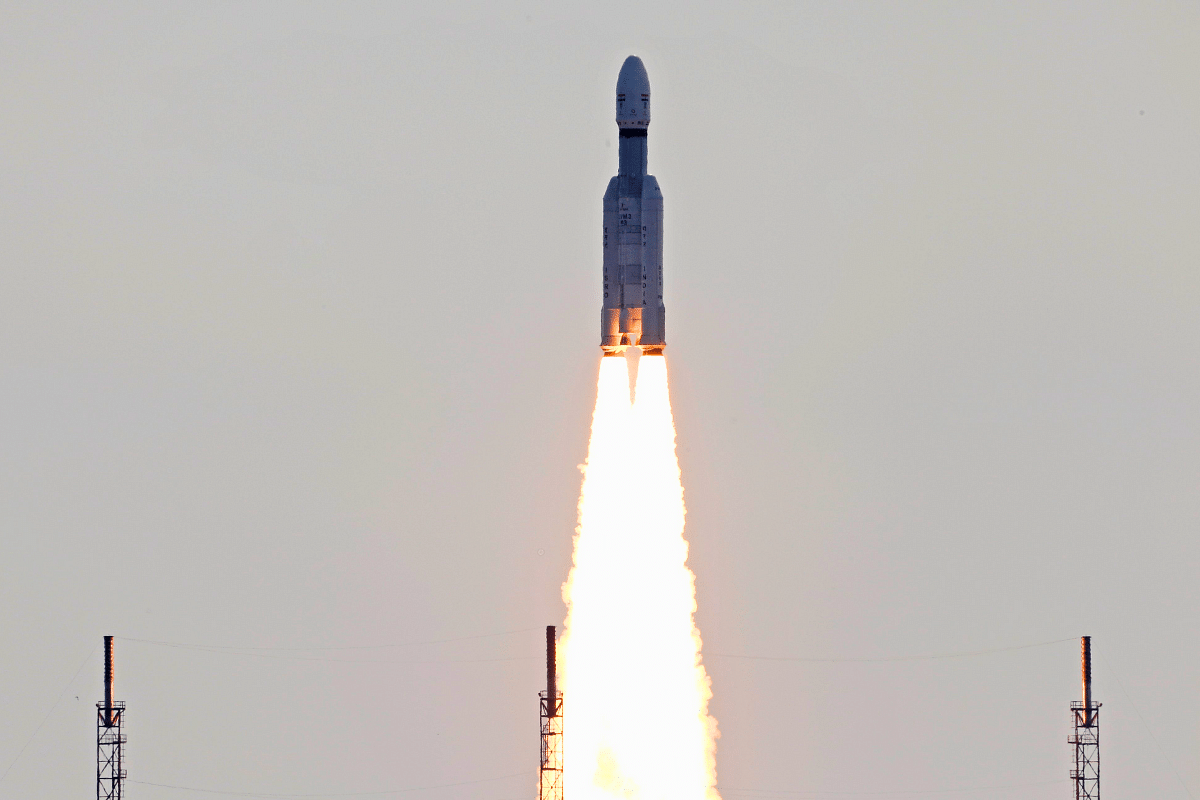Science
ISRO Delivers 36 OneWeb Gen-1 Satellites Into Orbit In LVM3’s Sixth Straight Successful Flight
- With its second successful commercial launch with OneWeb, ISRO's LVM3 rocket has further reinforced its credentials for the global market.

Off it goes, ISRO's LVM3-M3 rocket, to fulfil the OneWeb India-2 mission. (Photo: ISRO/Twitter)
India’s heaviest rocket took off with 36 OneWeb satellites at 9 am, Sunday (26 March), and deposited all of them in their intended orbits.
The successful mission marked the completion of the LVM3-M3/OneWeb India-2 mission, which, along with the OneWeb India-1 mission on 23 October last year, has led to the placement of a total of 72 satellites in low-Earth orbit (LEO) over two missions.
The LVM3 had delivered the first batch of 36 OneWeb satellites on its debut commercial flight, and only its second operational mission, on Diwali day last year. It had, thus, become a proper option on the global commercial launch market in the process.
With its second successful commercial launch with OneWeb, the LVM3 rocket further reinforces its credentials for the global market.
OneWeb is an LEO satellite communications company from the United Kingdom (UK). India’s Bharti Enterprises is a major investor and shareholder in OneWeb, and Sunil Bharti Mittal is OneWeb’s executive chairman.
Its launch with the Indian Space Research Organisation (ISRO) was its eighteenth and final one, and third this year, to cap off its first-generation LEO constellation of 618 satellites (of the 150-kilogram class).
It has now put together enough satellites in orbit to begin providing high-speed, low-latency internet connectivity worldwide starting later this year.
OneWeb had contracted NewSpace India Limited (NSIL), the commercial arm of ISRO, for the LVM3 satellite missions. The deal was for the launch of 72 satellites across two missions for a fee of over Rs 1,000 crore.
ISRO’s 43.5-metre (m) tall LVM3 rocket lifted off today along with its suite of satellites, weighing 5,805 kilograms (kg), from the second launch pad of the Satish Dhawan Space Centre-Sriharikota Range (SDSC-SHAR), off the coast of Andhra Pradesh.
The satellites were placed into a 450-km circular orbit, with an inclination of 87.4 degrees. They were deployed in a sequential manner, in nine batches of four satellites each.
ISRO's heavy-lift launcher, thus, registered its sixth consecutive successful flight. Previous LVM3 launch successes include the Chandrayaan-2 and OneWeb India-1 missions.
He was speaking at the SDSC-SHAR facility after 16 satellites had been deployed.
“We look forward for greater engagement with our commercial partners for making this rocket one of the best in this class,” Somanath added.
"Having a repeat performance of any particular launcher is not an easy thing to do," said D Radhakrishnan, the chairman and managing director of NSIL.
"One special thing what we see in this particular mission is the cryogenic stage being used for doing such a complex manoeuvre, to meet the requirements of OneWeb in deploying 36 satellites. It's extremely challenging stuff that has been done and repeated here once again in the second mission," Radhakrishnan added.
"Once again, the launch vehicle LVM3 has shown its might and ruggedness in taking heaviest payload from our soil to the precise orbit which is required by the satellite," said mission director S Mohana Kumar.
Kumar said the LVM3-M3 launch vehicle was assembled at the newly built Second Vehicle Assembly Building. "From the nozzle trial actuation through the S200 stacking to the entire vehicle integration was carried out under one roof with utmost care and best standards of safety," he said.
The rocket was also transported to the launch pad on a newly built track.
The launch campaign was completed in a record time of 72 days, Kumar said.
Somanath said the next launch, in April, involves the polar satellite launch vehicle (PSLV) to implement a commercial mission.
ISRO is also preparing for the next launch campaign involving the LVM3 rocket.
"We are also commencing the campaign for GSLV Mark-2," Somanath said.
Introducing ElectionsHQ + 50 Ground Reports Project
The 2024 elections might seem easy to guess, but there are some important questions that shouldn't be missed.
Do freebies still sway voters? Do people prioritise infrastructure when voting? How will Punjab vote?
The answers to these questions provide great insights into where we, as a country, are headed in the years to come.
Swarajya is starting a project with an aim to do 50 solid ground stories and a smart commentary service on WhatsApp, a one-of-a-kind. We'd love your support during this election season.
Click below to contribute.
Latest